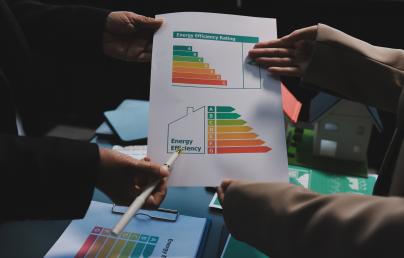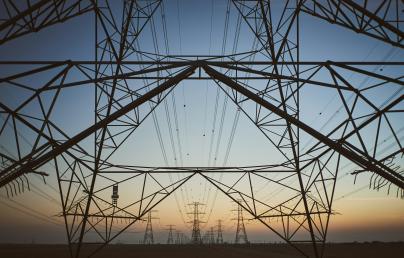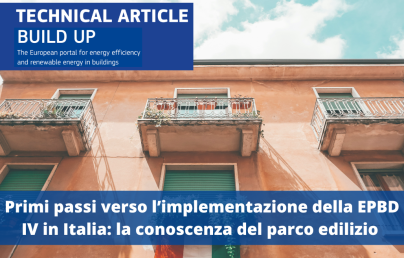
Technical Article - Arise article series ‘Digitalisation in the built environment’ #1: Awareness

Technical Article - Arise article series ‘Digitalisation in the built environment’ #1: Awareness
This article addresses what the main barriers are to matching the offer and demand of well-qualified workers to achieve the target set by the European Green Deal. It will also discuss how digitalisation can contribute to attracting workers to the construction sector while ensuring quality of training and results.
Authors: Paul McCormack, Innovation Manager at Belfast Metropolitan College; Dr. Veronika Schröpfer, Head of EU Research Projects at Architects' Council of Europe (ACE-CAE); Larissa C. De Rosso, Project Officer at Architects' Council of Europe (ACE-CAE).

(Note: opinions in the articles are of the authors only and do not necessarily reflect the opinion of the EU).
- Paul McCormack: LinkedIn & Twitter
- Dr. Veronika Schröpfer: LinkedIn
- Larissa De Rosso: LinkedIn & Twitter
A well-qualified construction workforce is one of the key factors for achieving significant contributions towards the targets set out in the European Green Deal. In order to achieve the climate targets, up-to-date knowledge and skills for professionals in the sector are fundamental not only to transition to a green economy, but also to attract more professionals to the sector. New digital technologies will empower and enable people with the skills, training, and abilities to do jobs they previously could not have.
Are labour shortages in the construction sector here to stay?
A well-qualified construction workforce is one of the key factors for achieving significant contributions towards the targets set out in the European Green Deal.
The green economy is defined as one in which value and growth are maximised across the whole economy, while natural assets are managed sustainably. Such an economy is supported and enabled by a thriving low carbon, environmental goods and services sector. Central to this new green economy is a vibrant design and construction sector that can substantially contribute to increase the resource efficiency and resilience to climate change. In order to achieve the climate targets, up-to-date knowledge and skills for professionals in the sector are fundamental not only to transition to a green economy, but also to attract more professionals to the sector. However, the construction sector is struggling to achieve its carbon reduction targets due to labour shortages and skills shortages.
According to a CEDEFOP survey, the employment level (2018-2030) is expected to increase 7.6% for construction workers in Europe. However, during the same period, it is expected that over 4 million people leave the occupation for many reasons, such as retirement. This results in 4.5 million job openings in the sector.

Figure 1: Future job opening of construction workers, Source: CEDEFOP
Empirical data is quite clear, economic growth stagnates when a population ages (1).
Many developed countries have ageing populations. The generational baby boom of the 1950’s/1960’s is now retiring from the workforce and leaving gaps behind. Smaller succeeding generations means that there are fewer people available to fill these newly vacant roles. This is manifesting itself as the reason behind labour shortages that have plagued many economies since 2020.
How does this generational gap concern the built environment?
The generational gap is allied with the mismatch of skills needed versus skills possessed. Add in the increasing ‘university pathway’ pressure for young adults to follow and an accompanying drop in lieu of those taking up trades. Moreover, construction safety on site and weather lead to health issues which makes these jobs unattractive. All these issues and more contribute to the lack of workers in construction and a direct translation to the lack of energy efficiency being achieved throughout the European built environment, failing the Renovation Wave targets.
For many years, these issues were avoided by utilising offshore manufacturing or addressing worker shortages and associated discrepancies in skills through immigration and migrant workers. However, globally declining birth-rates ensure that these shortages will remain a persistent issue.
We can face this demographic decline by radically overhauling our skills and training systems and by making them more attractive, taking full advantage of technological innovation, especially digitalisation, in the up-skilling process. This way we could use digitalisation as a tool to solve these problems.
New digital technologies will empower and enable people with the skills, training, and abilities to do jobs they previously could not have. Technological advances will not only mitigate the consequences of demographic decline but will deliver a better, more highly skilled workforce who will work smarter and not harder. The better we train and equip workers across the construction value chain, the more efficient and effective the work that will be delivered, providing a high-quality green and more energy-efficient built environment.
Conclusion
The lack of well-qualified construction work has a direct impact on the achievement of the Renovation Wave target. Digitalisation is a tool to attract and qualify professionals in the construction sector to deliver a high-quality green and more efficient built environment.
References
- E. Bloom, David , et al. Program on the Global Demography of Aging at Harvard University. Working Paper Series: PGDA Working Paper No. 20 : Does Age Structure Forecast Economic Growth? . Harvard University. [Online] June 2007. https://www.hsph.harvard.edu/pgda/working/.
- CEDEFOP. Construction workers: skills opportunities and challenges (2019 update). [Online] 30 JAN 2020. [Cited: 08 March 2023.] https://www.cedefop.europa.eu/en/data-insights/construction-workers-skills-opportunities-and-challenges-2019-update#group-details.
- The European Green Deal. [Online] 2020. [Cited: 06 APRIL 23.] https://build-up.ec.europa.eu/en/resources-and-tools/links/european-green-deal.
- https://build-up.ec.europa.eu/en/resources-and-tools/links/renovation-wave. [Online] 2020. Renovation Wave.
-

